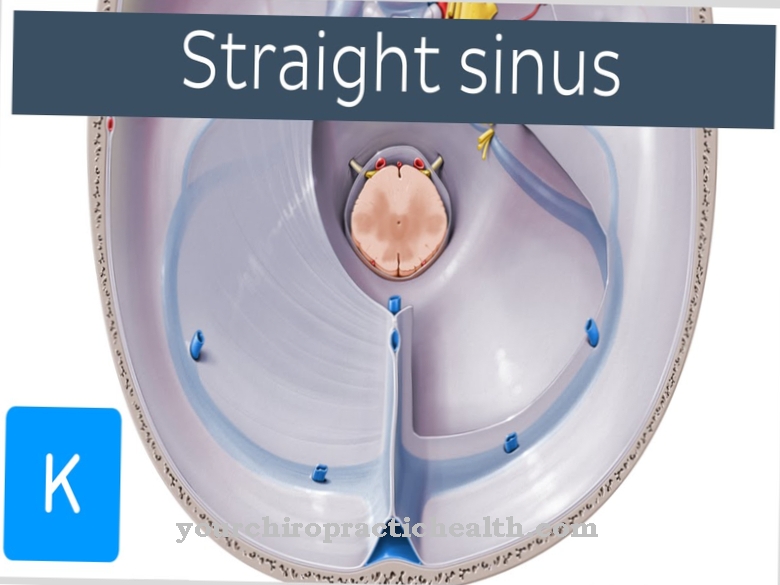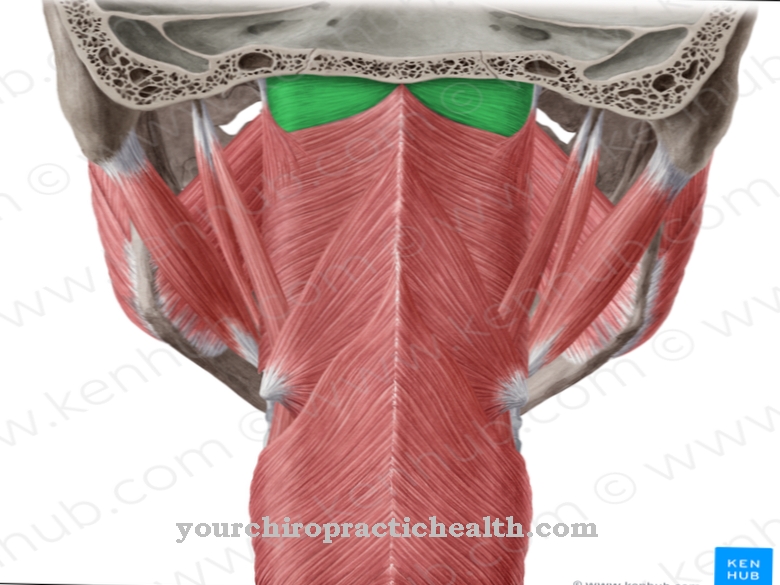As hammer is one of the three ossicles in the middle ear. It transmits the vibrations of the eardrum with amplification to the anvil. The anvil transfers the vibrations to the stapes, which transmits the mechanical vibrations to the liquid medium perilymph and the cochlea via the oval window. The hammer, along with the other two ossicles, is one of the smallest and at the same time hardest human bones.
What's the hammer?
The tiny hammer (Malleus) in the middle ear is one of three ossicles that are articulated to one another and mechanically amplify the vibrations of the eardrum. The stirrup transmits the vibrations at the oval window to the inner ear and the cochlea, in which the mechanical sound waves are converted into electrical nerve impulses. Together with the other two ossicles, the hammer is one of the smallest, but also one of the hardest bones in the human body.
Within this group of three, the hammer is the largest ossicle. The “handle” of the malleus is firmly fused with the eardrum so that it can directly take over the vibrations of the eardrum. The hammer transmits the vibrations to the anvil via a special joint. The technical term Malleus for the hammer also stands in identical spelling for a bacterial disease that only affects equines. The disease is also known as snot.
Anatomy & structure
Anatomically, the ossicle malleus can be divided into handle (manubrium), neck (collum) and head (caput). At the top of the hammer handle there are two small appendages, the front and the side of the hammer, on which ligaments have grown that hold the hammer in place. With the handle, the hammer has grown firmly into the connective tissue layer in the middle of the eardrum.
From the outside, from the other side of the eardrum, the waxing point of the hammer appears as a stria mallearis and is visible by otoscopy. The large head of the hammer is connected to the anvil via a saddle joint (articulatio incudomallearis). The joint is firmly encapsulated and provided with so-called ratchet teeth, so that only small movements of up to about 5 degrees are possible. In mammals, it developed from the original temporomandibular joint (primary temporomandibular joint), so that the current temporomandibular joint in mammals is a relatively new development and is also known as the secondary temporomandibular joint.
Tiny muscles ensure a permanent state of tension in the reaction chain of the middle ear, consisting of the eardrum, ossicles and oval window. The tympanic membrane tensioner (Musculus tensor tympani) pulls the hammer handle inwards when it is tensed, thereby tightening the eardrum. Like the other ossicles, the hammer is covered by a mucous membrane.
Function & tasks
The main function and task of the hammer is to absorb the sound vibrations of the eardrum and to transmit the vibrations to the anvil, which in turn transmits them to the stapes with amplification. The hammer and anvil are mounted in such a way that their axes of rotation are each in the center of gravity. As a result, their oscillation in connection with their low weight is possible with the lowest possible mass acceleration and the lowest possible energy loss.
Even the highest still audible tones in the range above 15,000 Hz to below 20,000 Hz at the limit of ultrasound can be picked up by the hammer and transmitted without any problems. The hammer can also transmit low frequencies in the limit range of infrasound below 40 Hz without any frequency shifts or conversions. When absorbing and transmitting the vibrations of the eardrum, it is important that the movable joints between the auditory ossicles and the ossicles themselves react very hard and elastic, because otherwise there would be considerable transmission losses. When it comes to the transmission of vibrations, however, it is not only the frequency response of the tones and noises that matters, but also the sound pressure that acts on the eardrum.
Within the hearing range, the sound pressure ranges between the lower hearing threshold or hearing limit and the pain threshold. The range that is best perceptible to the human ear and which at the same time shows a high tolerance until the pain threshold is reached is around 100 to 6,000 Hz As realistic as possible transmission of the sound waves, but also in a protection of the sensory cells in the inner ear from overload. This means that the sound transmission can be dampened by reflex-like tensioning of the tiny inner ear muscles, thus protecting the sensory cells.
You can find your medication here
➔ Medicines for earache and inflammationDiseases
The most common complaints related to the absorption of vibrations by the hammer and the transmission of the vibrations are caused by inflammatory processes in the middle ear. If left untreated, the inflammation can lead to sclerotic changes in the auditory ossicles, which are associated with a reduction in functionality and cause a corresponding hearing loss due to sound conduction problems.
Inflammatory processes in the middle ear often lead to a tympanic effusion, an accumulation of serous, slimy, bloody or purulent fluid in the tympanic cavity. The tympanic effusion is usually accompanied by hearing loss because the function of the sound conduction chain, the eardrum and the ossicles, is impaired. If the symptoms are in the non-chronic stage, they can resolve themselves again if the cause, the tympanic effusion, has been successfully treated.
Interestingly enough, hearing hypersensitivity occurs when the trigenimus nerve, the 5th cranial nerve, is functionally impaired because a side branch of the nerve innervates the tensor tympani muscle. The muscle can then no longer react to (too) loud noises, so that the protective function of noise insulation fails by reducing the efficiency of sound transmission.



























